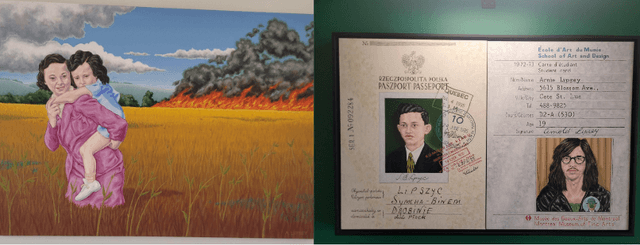Rebecca Rubin is no ordinary girl—she’s an ambitious, spirited dreamer navigating the vibrant chaos of early 20th-century New York City. Having recently immigrated from Russia with her family, Rebecca spends her weekends helping out at her father’s shoe store and attending Yiddish theatre performances, her preferred entertainment over the popular silent films of her time. Her sense of style reflects her bold personality, from the neat blue cardigan and black checked skirt she wears at school to the lavender summer dress she flaunts on Coney Island’s boardwalk. She completes her look with a striking purple hat trimmed with velvet ribbon, a golden necklace with a pink stone pendant, and a movie magazine clutched in hand—a testament to her big dreams of becoming an actress.
Here’s the twist: Rebecca isn’t a real person. She’s an 18-inch American Girl doll introduced in 2009 as the brand’s first Jewish historical character. Rebecca’s world is brought to life through accessories honouring her Jewish identity with items like a Menorah and Dreidel Set, Hanukkah outfit, and a Sabbath Set that includes a tiny challah loaf (eat at your own risk). These dolls, which cost over $100, are a luxury item, and you practically need to remortgage your house to keep up with the American Girl empire.
But Rebecca wasn’t just a doll—she offered many Jewish children the chance to see themselves, their traditions, and their values reflected in a mainstream, aspirational narrative. Her story also echoes the struggles of countless immigrant families at the turn of the century, caught between the pursuit of the American Dream and the desire to preserve their traditions. For the first time, Jewish families could embrace the joy of giving and receiving an American Girl doll without compromising their cultural values by buying the brand’s holiday items exclusively tied to Christmas.
Sophie Tate, a third-year student at McGill University, remembers how a simple gift transformed her childhood. Growing up in a small town without a large Jewish community, Sophie rarely saw her heritage represented around her. But on her sixth birthday in 2010, her beloved Bubsy (grandmother) gave her Rebecca Rubin.
“She’s brunette, just like me, and she’s Jewish!” Sophie remembers exclaiming when she unwrapped the doll. Rebecca’s story of a Jewish immigrant family in early-1900s New York mirrored the tales that Sophie’s Bubsy told her about their own family’s journey from Poland to Brooklyn to build a new life.
As the only Jewish girl in her class, Sophie used Rebecca to teach her friends about Judaism during playtime. “Many of them had never even met a Jewish person,” Sophie says. Rebecca became a conversation starter, a source of pride, and a bridge to understanding Sophie’s culture. “She gave me a figure I could look up to, someone whose Jewish identity was celebrated,” Sophie reflects. Now a university student, she recognizes how important Rebecca was in helping her understand her own cultural identity and how something as small as a doll can have a profound impact on representation.
Of course, some might argue that American Girl flattened and commodified Rebecca’s Jewish identity into a product they could sell and only a privileged few could buy. Sure, they use her relatable allure to sell a doll-sized $36 menorah and dreidel set. Rebecca cannot, and does not, represent all of a Jewish culture that is multifaceted and diverse. But for many Jewish girls, Rebecca remains the only Jewish option with whom they can identify. She allowed them to feel seen, celebrated, and understood, during Hanukkah and beyond. Rebecca Rubin—with her culturally significant, yet overpriced accessories—is here to stay.
Powered by Froala Editor






